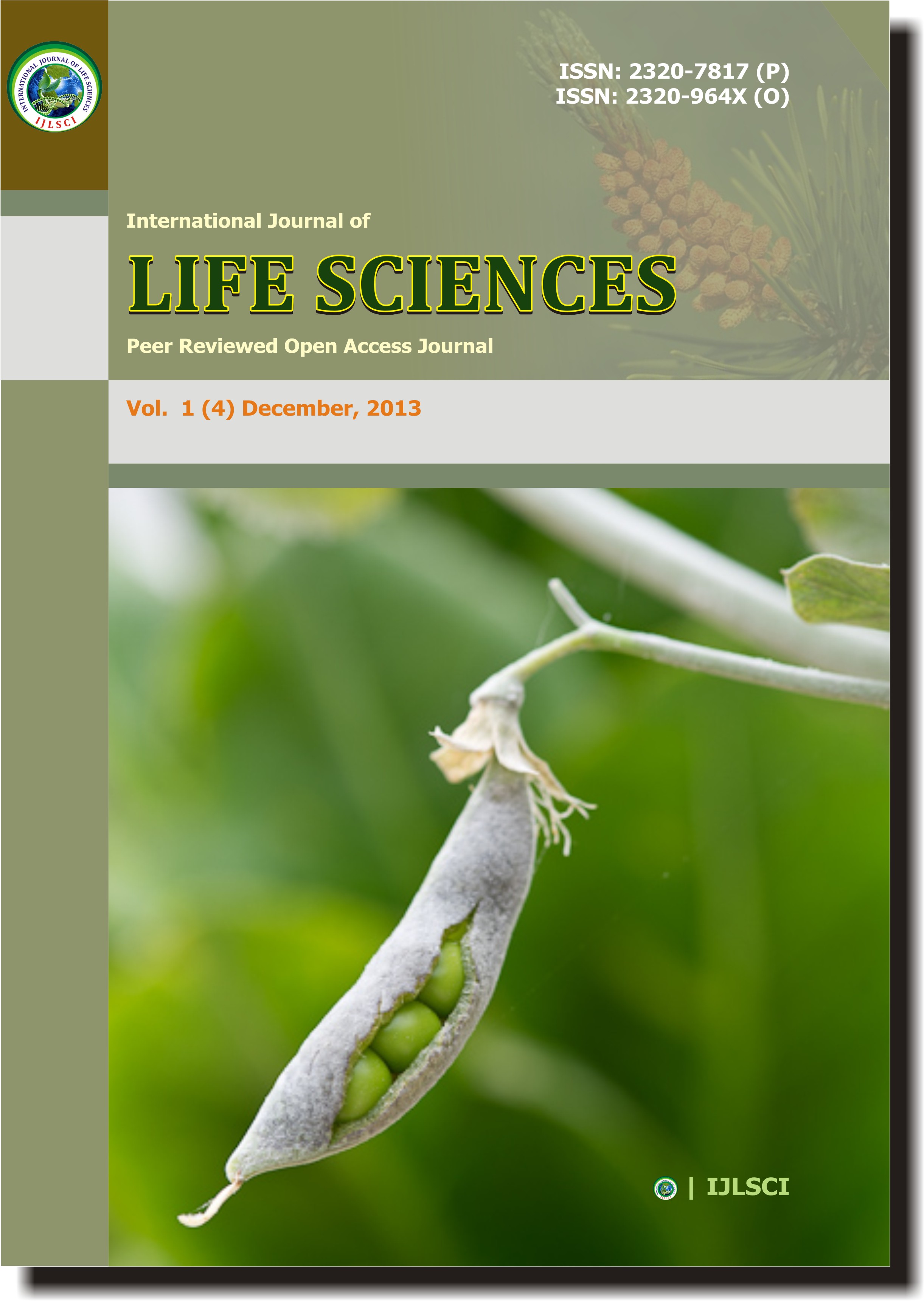Histological and Phytochemical studies on aromatic plant, Anisomeles indica(L.) of family Lamiaceae (M.S.) India
Keywords:
Anisomeles indica, Lamiaceae, leaves, Phytochemical, anatomical, analysisAbstract
Anisomeles indica plant was collected from Dr. Panjabrao Deshmukh Krushi Vidyapeeth Agriculture Farm, Nagpur district (Maharashtra state). This plant belongs to family -Lamiaceae and is commonly known as “Gopoli” which is an evergreen aromatic, perennial, erect herb and measuring about 1.5cm in height. The stem is quadrangular, the leaves are covered by hairs and inflorescence is of verticillasters type. In the present study anatomical characters and phytochemical analysis of the leaves are reported. Anatomical characters reveal the study of leaf anatomy. Phytochemical analysis confirmed the presence of alkaloids, tannin, glycosides, carotenoids and saponin in leaves. Alkaloids showed high scores while tannins showed moderate scores but saponins indicated low scores. Aromatic oil is found in 6% in 3gm of dry weight of powder of leaves of Anisomeles indica. The present investigations concluded that the leaves of Anisomeles indica contains alkaloids>tannins> saponins >Glycosides>Carotenoids>Polyuronoids in this order, and contains double percent amount of aromatic oil. These chemicals are widely used in Ayurvedic traditional medicinal system.
Downloads
References
Bhattachrjee SK and Jain Shashi (2001) Hand book of medicinal plant, published by Pointer publisher, Vyas Building S.M.S. Highway Jaipur 302003 (Raj) India 220-222
Farnsworth NR (1966) Biological and Phytochemical screening of plants. Journal of pharmaceutical Sciences, 225-276.
Geissman TA (1963) Flavonoid compounds, tannins, lignins and related compound. In M. Florkin and E.H.Stotz(ed), Pyrrole pigment, so[renoid compounds an phenolic plant constituent, Elsevier, New York.9:265.
Harborne JB (1973) Phytochemical methods, Chapman and Hall, London.
Harborne JB (1998) Introduction to Ecological Biochemistry 3rd Edn. Academic Press. London, pp 10-15.
Kurian A and Sankar MA (2007) Medicinal plants 2 New India Pubishing Agency pp. 239-262.
Maxwell A, Seepers M, Pingal R, Mootoo DR and Rrynolds WF (1995) 3- Beta-amino Sprisolane steroidal alkaloids from Salanum triste. J. Matl Prod, 58:625-628.
Nurdan Sarac and Aysel Ugur, (2007) Antimicrobial activities and usage in folkloric Medicine of some Lamiaceae species growing in Mugla,turkey. EurAsia J. BioSci., 4:28-37.
Singh R and Sawhney SK (1988) Advances in Prontier areas of plant Biochemistry Prentice Hall in India Private Ltd. New Delhi. Pp. 487.
Thimmaiah SR (1999) Standard Methods of biochemical Analysis,Kalyanin Publishers, Ludhiana-New Delhi- Noida .
Downloads
Published
How to Cite
Issue
Section
License
Copyright (c) 2013 Authors

This work is licensed under a Creative Commons Attribution-NonCommercial-NoDerivatives 4.0 International License.
Open Access This article is licensed under a Creative Commons Attribution 4.0 International License, which permits use, sharing, adaptation, distribution and reproduction in any medium or format, as long as you give appropriate credit to the original author(s) and the source, provide a link to the Creative Commons license, and indicate if changes were made. The images or other third party material in this article are included in the article’s Creative Commons license unless indicated otherwise in a credit line to the material. If the material is not included in the article’s Creative Commons license and your intended use is not permitted by statutory regulation or exceeds the permitted use, you will need to obtain permission directly from the copyright holder. To view a copy of this license, visit http://creativecommons.org/ licenses/by/4.0/











